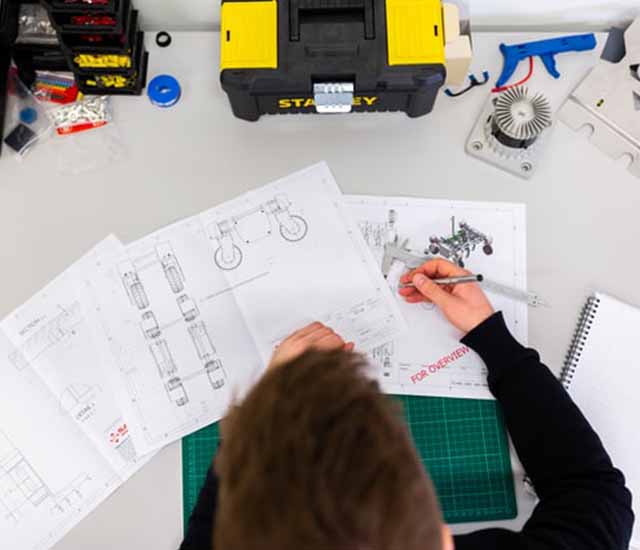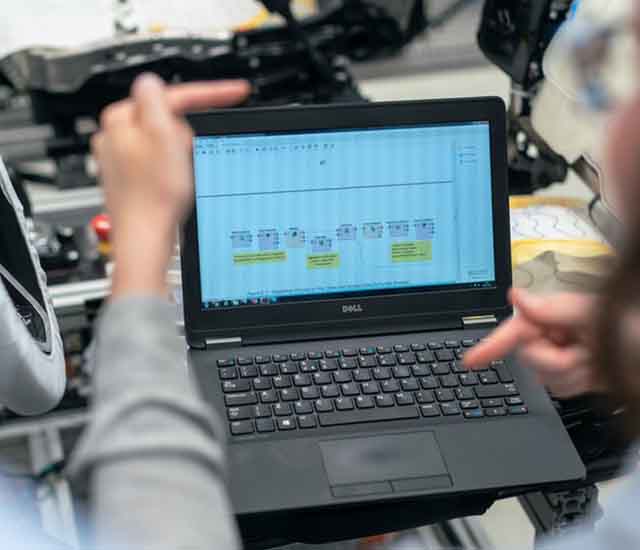المجموع الفرعي:
Best budget engineering laptops
Best budget engineering laptops
One of the necessary tools for engineering students is a laptop with powerful performance, good battery life, and an integrated graphics card suitable for their coursework and beyond. A Suitable engineering laptop must have a powerful intel core, a dedicated GPU, and memory to handle extensive engineering software. The best laptop for engineering students includes a few other specifications, from weight to software support. Before purchasing a laptop for your needs, you need to review this guide because we will cover all you need to know.

A suitable weight for engineering laptops
Any engineering laptop for a student must be light weighed. Engineering students would not prefer to have a heavy laptop to lug while going from class to class.
Software support
Engineering students usually have to work on different engineering projects during internships and college. Therefore, best budget engineering laptops are the ones that allow engineering students to install and run engineering software and applications for their courses. Also, they should include enough space for different engineering programs and have enough processing power to use other programs. Suitable engineering laptops support all engineering software programs without slowing down the machine.
Cost
Suitable laptops for engineering students are not cheap. But the essential fact to consider is that students can use them for years after graduation and stepping into professional engineering roles. If you are an engineering student, you must know that the best budget engineering laptops may range from $1,000 to $2,000.
Consider asking the pros.
If you want to buy an engineering laptop, but are not sure of the exact recommended specifications, one of the best ways is to consider contacting the engineering department or a professor from your university to get more information. These people can introduce the best engineering laptops for you to purchase.
Most modern engineering laptops may include most of these specifications. However, we know all these features may be hard to come by. Now, let us get into more details to help you become more familiar with the specific characteristics of the best laptop for engineering students.
What are the specific features of the best budget engineering laptops?
When you browse highly-ranked laptops for engineers, you may decode a foreign language. You will encounter many fancy words and various combinations of capitalized letters; with technology development, the demand for high-end engineering laptops decreases. More and more work is transferred to the cloud every day, so storage is not a confusing mess of hard drives and external CDs.
RAM and GBs are no longer the most important factors since the cloud does the heavy lifting. When the CPU is not weighted down, web applications work better. For laptop designers, engineering laptops are a unique debacle. Best budget engineering laptops require memory, top-notch visuals, and graphics horsepower. In the rest of this article, you will become familiar with the best laptop for engineering students to keep while searching for it.
High-speed processor
The first feature we will talk about is the high-speed processor. The processor of your computer is considered the central processing unit or CPU. To put it simply, the processor is the brain of your computer, responsible for interpreting and performing commands from your computer’s hardware and software.
CPUs are classified based on their clock speed. This factor means how quickly the processor interprets and executes commands in any given second. When the clock speed is higher, your computer will run faster. However, the CPU is not the only indicator of the speed of your engineering laptop.
Engineering students need to download many power-demanding tasks to their laptops, like video editing and equation editors. The best budget engineering laptops have high GHz and run more quickly and efficiently. The CPU itself is considered an internal component of your computer. This means that you have to insert it into a socket in the motherboard. Therefore, when you have decided to purchase a laptop, you may want to find the one that has the CPU you need.
What is the best processor?
If you are looking for suitable laptops for AutoCAD and engineering, keep in mind that the Intel Core i7, 11th Gen, or newer is recommended and can be a good choice. The least minimum is Intel i5 or i7 10th Gen. The processor handles power-demanding tasks such as video and film editing, gaming, CAD, and others. This makes your laptop ideal for different software programs needed in engineering classes.

Multiple cores
As we mentioned earlier, the CPU is the brain of your laptop. However, this brain is not flawless because it may reach its physical limitations in clock speed and cool down after processing information. If you purchase one of the best budget engineering laptops with multiple cores, the CPU can maintain accuracy.
What is a core in engineering laptops?
The place where the processor can receive its instructions and execute calculations is called the core. As a result, more cores mean more space the processor has to do its job without reaching its physical limitations. The CPU on your engineering laptop will perform a higher number of tasks with an increased amount of software. When there are more cores on your computer, the speed and effectiveness of the laptop will remain constant.
The ideal number of cores
An ideal student’s engineering laptop has four cores, while the bare minimum is usually two.
Large memory
Memory is the information your laptop stores for immediate use. It operates at high speed and allows the computer to access the data quickly. When you open a document or double-click on an app, you use memory. When you turn off your computer, this data disappears immediately. Be careful not to confuse memory with storage which is the permanent data on your computer.
How much memory is enough for the best budget engineering laptops?
RAM or random-access memory is the best type of memory for an engineering laptop. RAM reads and writes data items simultaneously, regardless of the location of the data in the memory. When the amount of RAM on a computer is high, you can work better with larger files. Basic computer processes like Microsoft Word do not need a high amount of memory. However, the extensive software for engineering classes requires more memory footprints to create the data.
By using higher RAM, these programs run faster, and you will face no problems while working with big image files and big apps. More than 16GB of RAM is adequate memory in the best budget engineering laptops. The minimum requirement is up to 16GB RAM. Remember that some laptops won’t upgrade your RAM after buying them. So you must purchase a computer with the appropriate amount of RAM and make sure that it is upgradable.
Substantial storage space
Memory is the information that disappears whenever you turn off your laptop. But what is storage? It is everything that stays on the computer forever. All you need to do is think about those emails and documents you have saved or programs such as CAD and CAM that you have downloaded on your computer. Storage includes a high-capacity memory and does not work as instantaneously as memory.
What are the best kinds of storage?
A solid State Drive or SSD is an essential feature for an engineering laptop. It is the time to forget hard disks, CD-RWs, and DVD-RWs since the only thing they do is slow down the information processing on your computer.
The main difference between an SSD and other storage methods is how they store the data. Other methods use magnetized disks while data is kept in memory with SSD. You can access your information quickly, irrespective of where they are. SSD can read speeds close to 10GB/s. Whenever you download big files, programs, and software to your engineering laptop, you need a storage system capable of handling the high capacity and still delivering lightning speeds. The minimum requirement for SSD is 500 GB or more, but we recommend 1 TB or larger SSD.
Premium laptop displays and graphics
Engineering is all about creativity. The best budget engineering laptops allow you to design, manipulate and share your graphics. As a result, an engineering student needs to have a high-quality laptop display and graphics. On the other hand, portability is also an essential factor to consider. So, big screens would not be the best option. All engineering students must consider the resolution, size, screen type, and graphic processor while thinking about mobility.
Now, we will review three key features to have in mind when choosing laptop display and graphics.
Resolution
Resolution is about the number of pixels on display. A higher resolution offers you greater detail in the images on the screen. It also increases workspace. The ideal resolution for an engineering laptop is 1920 x 1080, and the minimum requirement is 1366 x 768. This amount will be suitable for standard programs used in engineering classes. An increase in the number of pixels will increase the price.
Screen type
The screen type depends on the technology used for the LCD panel (reflective, transmissive, or transflective) and the type of coating over the screen. These are the factors that affect the appearance of images. TN and IPS are two of the primary screen types. However, TN is the least expensive and the most commonly used. One of its features is that it can offer you the fastest refresh rates. Therefore, TN is a popular choice amongst gamers who should deal with fast-moving images. However, TN offers less cover displayed overall.
With IPS, you have better control over the light that passes through. As a result, it can offer higher color and viewing angles than TN. Keep in mind that IPS is more expensive and runs slower refresh rates. To buy one of the best budget engineering laptops, you should know that IPS would be better. It may run slower but offer superior image quality for work and image editing.
Graphic processor
A graphic processor, also called a GPU or graphical processing unit, does some rapid mathematical calculations to make images easier. In other words, GPU is one way to manipulate images on the computer. By offloading some of the tasks from your CPU, GPU helps the CPU to work more efficiently.
The cores of the memory can follow small sequences of instruction at a time. The GPU includes hundreds of cores. As a result, your laptop can function faster and more effectively. It would help if you looking for a laptop that has GPU alongside its CPU.
Long warranty
Best budget engineering laptops can offer you years of warranty plus accidental damage because no one likes to purchase a device that needs them to go to the store several times for repairs. You must know that laptops usually receive a fair amount of wear and tear during the constant lugging around campus or when you transfer them from the backpack to the desk. The minimum requirement for a warranty is three years, and the recommendation is four years with accident protection.
Affordability
You may want to purchase a suitable laptop for your work at an economical price. The truth is that the more features you add to a laptop, the more the price will increase. One of the common ways is finding engineering programs that can offer remote options for particular applications.
Final words
If you are an engineering student and want to purchase one of the best budget engineering laptops, you must look for specific features. You must look for powerful performance and integrated graphics cards in a laptop. A suitable engineering laptop has enough memory, a powerful intel core, extensive engineering software, and a dedicated GPU. Besides, you must pay attention to its weight, warranty, and affordability.

 حراج لابتوب مستعمل و لابتوب مجدد
حراج لابتوب مستعمل و لابتوب مجدد  كمبيوتر مكتبي مستعمل و كمبيوتر مكتبي مجدد
كمبيوتر مكتبي مستعمل و كمبيوتر مكتبي مجدد  Accessory
Accessory  الرامات " الذاكرة العشوائية في الهواتف والحواسيب "
الرامات " الذاكرة العشوائية في الهواتف والحواسيب "  محرك القرص الصلب
محرك القرص الصلب  بطارية
بطارية 


.jpg)